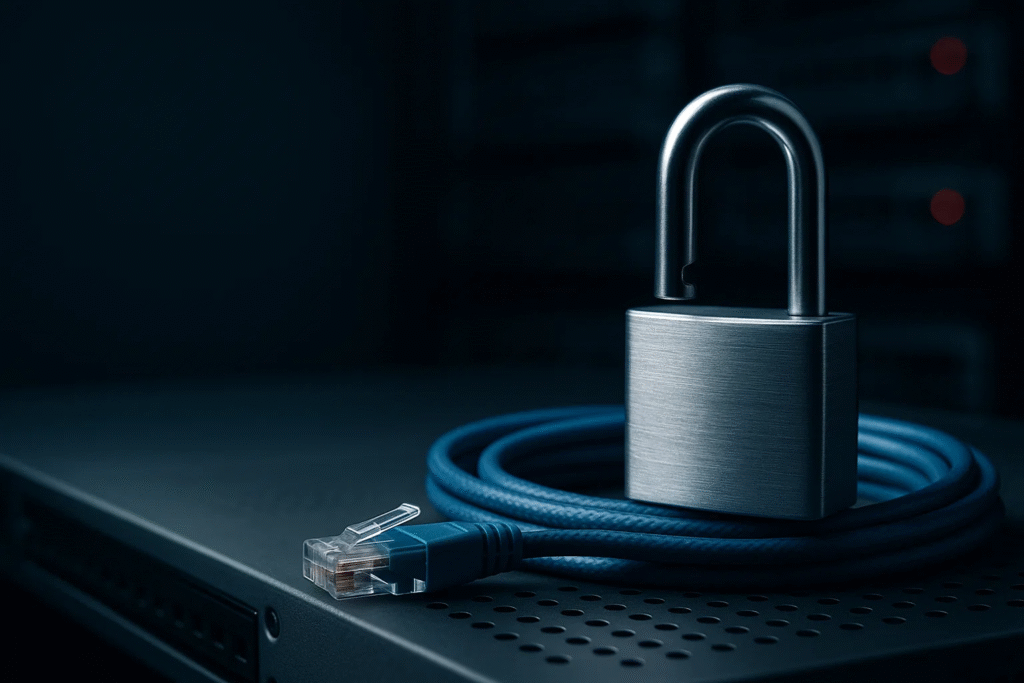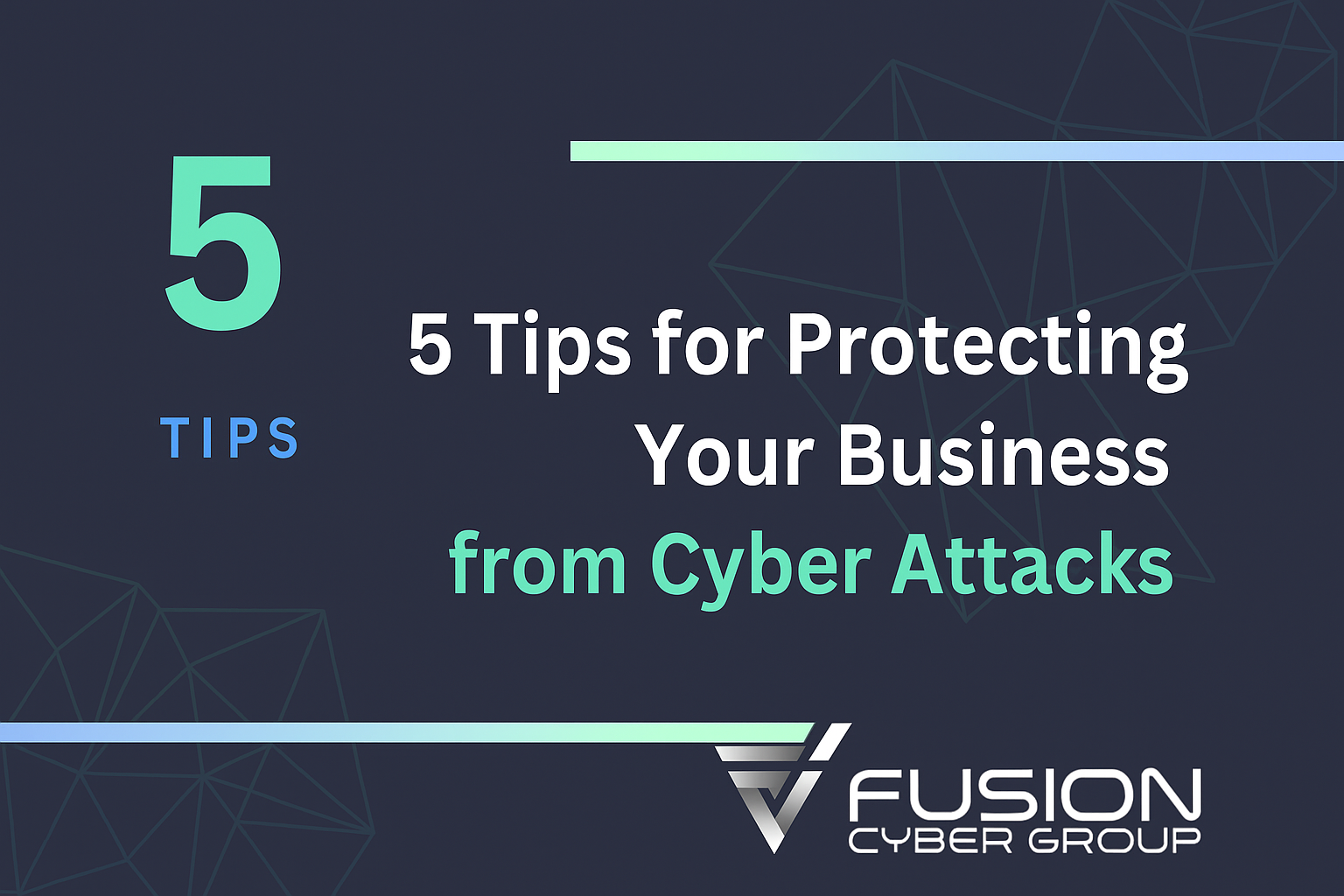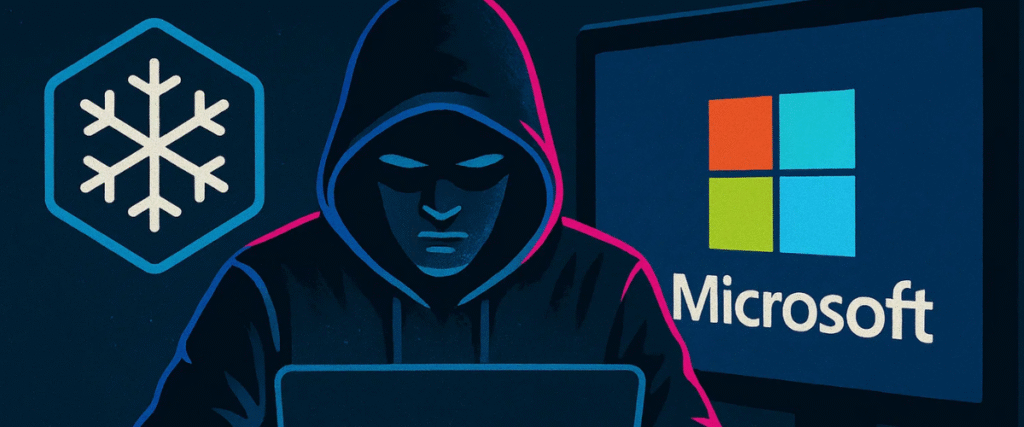Update Chrome now, restart every browser, and verify coverage today to block active attacks and keep your business, and your customers’ data, safe.
Google just patched another actively-exploited zero-day in Chrome (CVE-2025-10585), a type-confusion bug in the V8 JavaScript/WebAssembly engine. In plain terms, V8 can be tricked into mis-handling data types, which lets an attacker read or write memory they shouldn’t—often the first step toward running arbitrary code in your browser context. It’s the sixth Chrome zero-day of 2025, underscoring how frequently browsers are probed by criminal groups and brokers.
The fix is rolling out as Chrome 140.0.7339.185/.186 on Windows/macOS and 140.0.7339.185 on Linux. Update now and, critically, restart the browser; Chrome downloads updates silently, but protection isn’t active until a relaunch. If your business uses Chrome or any Chromium-based browser (Microsoft Edge, Brave, Opera, Vivaldi), apply their latest updates as well—these vendors inherit the V8 issue and typically follow with rapid point releases. Google has confirmed an exploit exists “in the wild,” so this is not a lab curiosity; it’s being used against real users in real attacks.
For Canadian SMBs (5–250 staff, up to $50M revenue), the business risk is straightforward and immediate. A user can be compromised via a drive-by event—visiting a booby-trapped site, clicking a malicious ad, or loading a compromised widget—without seeing obvious warnings. Once code runs in the browser, attackers aim for data theft (downloaded files, form inputs), credential takeover (password vaults, SSO cookies, session tokens), and ransomware initial access (droppers that establish persistence, then call back to command-and-control). From there, lateral movement to file shares and email is routine. The fix is free; the cost of delay is downtime, regulatory exposure, and reputational damage.
To reduce exposure during patch windows:
- Monitor for unusual browser crashes or new scheduled tasks after web browsing.
- Limit risky extensions and allow-list only those needed for business.
- Turn on Enhanced Safe Browsing for finance, HR, and executive roles.
- Enforce auto-update policies and nudge users to restart within business hours.
What happened?
- Vulnerability: CVE-2025-10585, a type confusion flaw in Chrome’s V8 JavaScript/WebAssembly engine that lets crafted web content mis-handle memory.
- Status: Exploited in the wild; Google is withholding deep technical details until the user base updates to reduce copycat attacks.
- Patched versions: 140.0.7339.185/.186 (Windows/macOS); 140.0.7339.185 (Linux)—restart required to be protected.
- Related fixes in same release: High-severity bugs in Dawn, WebRTC, and ANGLE (CVE-2025-10500/10501/10502).
- Context: The sixth Chrome zero-day of 2025, following May/July cases (e.g., CVE-2025-4664, CVE-2025-6554).
Attack reality: Delivery often comes via malvertising, watering-hole sites, or compromised third-party widgets. Type confusion commonly enables arbitrary code execution, which attackers chain to escape the sandbox or drop malware. SMB users visiting a booby-trapped site can be compromised without any prompts—no downloads, no obvious warnings—making speedy patching and enforced restarts essential.
Who’s affected?
All Chrome users on Windows, macOS, and Linux before 140.0.7339.185/.186.
Chromium-based browsers (e.g., Microsoft Edge, Brave, Opera, Vivaldi) typically ingest the upstream patch shortly after Google’s release—but you must still update and restart those browsers. This also includes the Microsoft Edge WebView2 Runtime used by many desktop apps; ensure it’s updated as well.
Extended/managed channels: If you use Chrome Enterprise with Stable or Extended Stable channels, the update rolls out per policy; admins must still enforce restarts and verify compliance.
Nuances:
- VDI/kiosks/digital signage and apps embedding CEF (Chromium Embedded Framework) are in scope once their vendors ship patched builds.
- ChromeOS devices receive platform updates separately—keep Auto-Update enabled.
- Android Chrome needs updating via the Play Store; iOS “Chrome” runs WebKit (not V8), so this specific bug doesn’t apply, but still update.
Risk to Canadian SMBs

- Credential theft & account takeover: Browser-stored passwords, session tokens, and SSO cookies are crown jewels. With a working exploit, attackers can bypass login pages entirely by hijacking active sessions, then create new API keys, app passwords, or OAuth grants that survive a simple password reset. Expect business email compromise (BEC), fraudulent invoices, and payroll redirections that look legitimate because they originate from a real account.
- Initial access & lateral movement: Attackers land via the browser, then pivot to file shares, ERP, or email. From a single compromised workstation, they enumerate shares, harvest browser and system creds, and move “low and slow” toward finance and leadership endpoints. Cloud is not immune—compromised browsers often have persistent SaaS sessions (Microsoft 365, Google Workspace, QuickBooks Online, Salesforce), turning the cloud into an amplifier for data theft.
- Ransomware enablement: Browser exploit → payload dropper → domain credentials → encryption. Modern crews double-dip with data exfiltration for extortion. Even if you refuse to pay, they’ll threaten to leak customer contracts, employee records, or supplier pricing—damaging trust and negotiation leverage.
- Regulatory exposure: PIPEDA and provincial privacy laws (e.g., Québec’s Law 25) require safeguards and breach reporting with timelines and penalties. A browser-led incident that touches personal information triggers legal counsel, forensics, and notification campaigns—costs that stack quickly and distract leadership.
- Operational downtime: A day of outage for a 40-person firm often exceeds the cost of years of patch management. Beyond lost revenue, consider supply-chain impact (missed SLAs, chargebacks), cyber insurance friction (claims scrutiny, higher premiums), and brand harm that lingers long after systems come back online.
IT Admin Playbook
A. Governance & update policy
Keep automatic updates ON. It’s the default; don’t disable it. Use Chrome Enterprise policies to enforce. Define a browser emergency patch SOP: who approves, who executes, how to verify, and how to communicate to users. Maintain rings (pilot → broad) so you can validate critical web apps before full rollout without stalling security fixes. For executive and finance devices, treat browser patches like out-of-band OS updates with same-day SLAs.
Release channels: Use Stable for most users; consider Extended Stable only for kiosks or line-of-business stations—but accept you’ll lag security fixes. Document every exception with a compensating control (e.g., stricter DNS filtering, no internet access to unknown domains).
Frequency: Chrome checks regularly; with policy you can tighten check intervals (AutoUpdateCheckPeriodMinutes) and block overrides. Pair with a restart window (e.g., prompts every 15 minutes up to a forced restart after hours).
B. Windows managed devices (GPO/Intune)
Import ADMX/ADML for Chrome and Google Update. Baseline settings:
- Update policy override default → Always allow updates
- AutoUpdateCheckPeriodMinutes → 60–120 during zero-day events
- TargetChannel → stable
- UpdateDefault → AlwaysAllowUpdates
- MetricsReportingEnabled & BrowserCrashReportingEnabled → Enabled
Add automatic relaunch notifications and a grace period (e.g., 4 hours) during business time with a hard cutover overnight. In Intune, use configuration profiles or PowerShell to set keys under HKLM\Software\Policies\Google\Update. Verify via chrome://policy and collect via your RMM. Audit Edge WebView2 updates as part of the same run.
C. macOS managed devices
Manage with Intune, Kandji, Jamf, or Chrome Browser Cloud Management. Push a mobileconfig/profile to enforce auto-update, suppress developer mode, and block extension sideloading. Use MDM inventory to alert on versions below the safe baseline and create a Self Service item that forces update + relaunch for holdouts.
D. Linux workstations
Update via APT/YUM/Zypper or Google’s repo; ensure the 140.0.7339.185 package is present and pinning isn’t blocking upgrades. Automate checks with a cron job that logs google-chrome –version to your SIEM. For immutable images, rebuild the golden image immediately and roll out.
E. ChromeOS
ChromeOS updates separately from Chrome browser, but zero-day mitigations tend to ship quickly. Keep Auto Update enabled in Admin Console; avoid pausing updates unless a confirmed breaking issue exists. Use release pins sparingly and set auto reboot after update for kiosks and shared devices.
F. Verification & reporting (what to prove to leadership)
Track:
- Coverage: % endpoints at or above 140.0.7339.185/.186 (goal ≥95% in 24 hours).
- Time-to-patch: Median time from advisory to browser restarted.
- Exceptions: Legacy OS/VDI and offline devices with ETAs and owners.
- Quality: Crash rate after update, helpdesk tickets, and extension conflicts.
Publish a one-page dashboard daily during the event and close with a post-incident review and updated SOP.
Detection & response: what to look for if you think you were targeted
- Browser instability + crash loops around the event timeline.
- New scheduled tasks/LaunchAgents created immediately after a browsing session.
- Unfamiliar extensions with escalated permissions added silently.
- Network indicators: Unusual outbound connections to newly registered domains, CDNs serving payloads, or TOR exit nodes.
- Credential anomalies: Sudden MFA prompts, new OAuth consents, or logins from atypical locations.
Deep-dive indicators (add these to your hunt):
- Process ancestry: Browser spawning powershell, cmd, mshta, curl, or rundll32 is a red flag.
- Persistence clues: New Run/RunOnce keys, LaunchAgents on macOS, or scheduled tasks with benign names (e.g., “Chrome Helper”).
- File system traces: Recent executables in %AppData%, %LocalAppData%\Temp, ~/Library/Application Support/, or /tmp.
- Chrome artefacts: Check chrome://version for exact build, chrome://policy for unexpected policies, and the Extensions folder for unsigned or recently modified items.
- SaaS audit trails: Admin portals for Microsoft 365/Google Workspace showing token grants, mailbox rules, or app-consent events.
IR steps:
- Isolate suspicious endpoints from the network.
- Collect volatile artifacts (RAM if possible), browser crash dumps, extension lists, prefetch, and ShimCache/Amcache.
- Sweep with EDR for common post-exploitation tools (Cobalt Strike beacons, AnyDesk/RustDesk installs).
- Reset passwords for affected users; revoke sessions in Google Workspace/Microsoft 365.
- Restore from clean backups if integrity is in doubt; scan archives before re-introduction.
- Add structure and timelines:
- Triage (0–2 hours): Contain, capture volatile data, snapshot IR-relevant logs (DNS, proxy, EDR).
- Eradication (2–24 hours): Patch browsers, remove persistence, rotate secrets (OAuth tokens, API keys).
- Recovery (24–48 hours): Reimage high-risk machines, validate with clean-bill EDR scans, and re-enable network access.
- Follow-up: Update awareness training, tune EDR rules (“browser → script runner”), and document lessons learned for leadership.
Hardening Chrome in an SMB
Start by standardizing one managed browser baseline and pushing it via your RMM/MDM. The goal is fewer exceptions and clear telemetry.
Monitoring & audits: Enable browser + crash reporting, collect extension inventory, and run a monthly audit of versions, extensions, and policy drift. Treat exceptions (kiosks, lab gear, legacy web apps) as high-risk with compensating controls and shorter patch windows.
Enhanced Safe Browsing (ESB): Turn ESB on by policy for finance, HR, exec assistants, and IT. ESB checks URLs and downloads in real time and flags risky extensions. Pair it with download protection (block executable file types for non-IT roles) and require user justification for overrides.
Extension control: Move to an allow-list model. Approve a short list (e.g., password manager, PDF viewer, conferencing tools) and block everything else. Disable Developer Mode and prevent “Install from file” to cut off sideloaded malware. Review extension permissions quarterly; remove those requesting broad data access or clipboard control.
Disable remote debugging: Turn off remote-debugging flags and block chrome://flags access for non-IT users. Attackers love DevTools remote targets to inject scripts.
Site isolation / strict origin isolation: Enable SitePerProcess and add IsolateOrigins for your crown-jewel apps (banking, ERP, payroll). This forces stricter process boundaries, reducing the blast radius of renderer bugs.
Identity & auth: Standardize on an enterprise password manager and enforce WebAuthn (FIDO2) / passkeys for admin consoles, banking, and email. Disable browser password export, require re-auth before viewing saved passwords, and clear cookies for sensitive sites on browser close.
Network & endpoint layers: Backstop the browser with DNS security (malware/C2 filtering), email security (URL rewriting + sandboxing), and EDR/XDR to catch suspicious child processes (e.g., browser → PowerShell). Consider blocking QUIC for high-risk segments if your inspection stack can’t parse it, but test for app impact.
Update discipline: Enforce auto-update, shorten update check intervals, and nudge restarts during business hours. Track restart compliance as a KPI.
User experience & training: Teach staff how to open About Chrome, why restarts matter, and how to report weird behaviour (pop-ups, sudden logouts, unusual prompts). Add a taskbar bookmark “Report a security issue” pointing to your helpdesk form.
Leadership brief

Situation: Active Chrome zero-day; patch available now. Treat as a business continuity event, not just IT hygiene. The attack path is web browsing—your most common activity—and the exploit is confirmed in the wild.
Business impact: Elevated risk of silent compromise → ransomware, data theft, regulatory exposure, and reputational harm. A single compromised workstation can pivot into finance systems or SaaS (Microsoft 365/Google Workspace), triggering invoice fraud, mailbox rule abuse, and data exfiltration. Downtime for even one day can exceed the multi-year cost of rigorous patch management.
Response: We enforced updates and restarts; >95% coverage within 24 hours; increased EDR monitoring; no indicators of compromise to date. Exceptions (legacy/VDI/offline) are isolated and owned with remediation ETAs. Helpdesk is briefed; comms went to staff with clear “update + restart” instructions.
Next (executive asks & governance):
- Approve a Browser Emergency Patch SOP, with decision rights (CIO owns, CISO verifies), and a time-to-restart KPI (<8 hours target; 24 hours max).
- Mandate layered controls: Enhanced Safe Browsing for high-risk roles, extension allow-list, and DNS/EDR safeguards.
- Require proof of control: Weekly dashboard on browser versions, restart compliance, and exception burn-down.
- Tabletop exercise within 30 days: drive-by compromise → ransomware scenario, including legal/PR.
- Third-party risk: Ask critical vendors/MSPs for attestation of their Chrome patch status and restart enforcement.
- Insurance & compliance: Notify broker if policy requires material incident reporting; ensure logging/records are retained for audit.
- Budget note: Minimal incremental cost; primary investment is discipline—automation for updates, monitoring, and user nudges.
Why Fusion Cyber keeps talking about “layers”

Zero-days happen. Even world-class software gets popped. Layered security is how smaller teams survive:
- 24/7 SOC + MDR/XDR to catch the odd signal amid noise.
- Vulnerability & patch management to shorten the window of exposure.
- DNS & email defenses to block common delivery paths.
- Backups & BCDR to restore fast if containment fails.
- Awareness training so the last line of defence (people) gets stronger.
If, despite your best efforts, you’re compromised, Fusion Cyber’s financially backed Cybersecurity Guarantee covers full incident response, containment, and business recovery for fully onboarded clients—at our expense. We design our incentives to align with your outcomes.
Ready to translate ethical hacking insights into fewer attack paths, faster detection, and clear remediation SLAs?
Featured Links:
SecurityWeek: “Chrome 140 Update Patches Sixth Zero-Day of 2025.”
Chrome enterprise update management (official docs)
BleepingComputer: “Google patches sixth Chrome zero-day exploited in attacks this year.”
FAQ:
Is Chrome auto-update enough?
Usually—if users restart. Managed environments should enforce auto-update and nudge/force restarts. Verify via inventory; don’t trust “it updates automatically” on faith.
Do Edge/Brave users need to worry?
Yes. They’re built on Chromium and typically ingest the same V8 fixes—update and restart promptly.
We’re on Extended Stable to reduce breakage. Is that safe?
It reduces feature churn but can lag security fixes. For most SMBs, Stable + change control is safer.
Can we disable V8 JIT as a mitigation?
Chrome doesn’t expose a supported, user-friendly JIT toggle for enterprise stability; focus on patching and layered controls rather than experimental mitigations.
What evidence shows this is urgent?
Google acknowledged an in-the-wild exploit for CVE-2025-10585; multiple reputable sources confirm the version numbers and zero-day status.
Situation
Google patched an in-the-wild Chrome zero-day (CVE-2025-10585) in V8; protection applies only after a browser restart across Chrome and other Chromium browsers.
Complication
Drive-by exploits enable session hijack, credential theft, and ransomware staging. Mixed fleets and user-deferred restarts create a high-risk exposure window.
Question
How do Canadian SMBs cut risk today and show stakeholders that controls worked?
Answer
Enforce updates and forced restarts, verify ≥95% coverage within 24 hours, and harden: Enhanced Safe Browsing, strict extension allow-listing, site/origin isolation, FIDO2. Backstop with DNS/email filtering and EDR/XDR, and report time-to-restart and coverage KPIs.
Our Cybersecurity Guarantee
“At Fusion Cyber Group, we align our interests with yours.“
Unlike many providers who profit from lengthy, expensive breach clean-ups, our goal is simple: stop threats before they start and stand with you if one ever gets through.
That’s why we offer a cybersecurity guarantee: in the very unlikely event that a breach gets through our multi-layered, 24/7 monitored defenses, we will handle all:
threat containment,
incident response,
remediation,
eradication,
and business recovery—at no cost to you.
Ready to strengthen your cybersecurity defenses? Contact us today for your FREE network assessment and take the first step towards safeguarding your business from cyber threats!






























































































